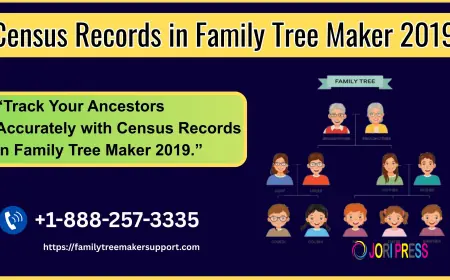WSET Exam Levels Explained: From Beginner to Advanced Certification
The WSET exam is one of the most respected paths in the world. The Wine & Spirit Education Trust (WSET) is a global organization offering structured qualifications for wine, spirits, and sake. Whether you are a beginner who enjoys wine casually or a professional aiming to build a career in the drinks industry

Wine is more than just a drink-it carries history, culture, and craftsmanship in every bottle. For those who want to understand wine on a deeper level, the WSET exam is one of the most respected paths in the world. The Wine & Spirit Education Trust (WSET) is a global organization offering structured qualifications for wine, spirits, and sake. Whether you are a beginner who enjoys wine casually or a professional aiming to build a career in the drinks industry, the WSET exams provide knowledge and recognition at every stage.
This article explains the different WSET exam levels, what each level covers, and how they can help you grow from a beginner to an advanced wine expert.
What is the WSET Exam?
The WSET exam is a formal test offered by the Wine & Spirit Education Trust to assess a student’s knowledge of wine, spirits, or sake. These exams are available worldwide through accredited course providers. Each exam corresponds to a course level, starting from beginner (Level 1) to advanced diploma (Level 4).
Passing a WSET exam gives you a certificate and a globally recognized qualification. Many people use it for career advancement in hospitality, retail, or winemaking, while others take it purely out of passion for wine.
Why Take the WSET Exam?
The WSET exam is more than just a test. It opens doors for personal and professional growth. Here are some of the main reasons people choose it:
-
Structured Learning: Each level follows a clear framework, so you build knowledge step by step.
-
Global Recognition: A WSET certificate is respected worldwide, making it useful for international careers.
-
Confidence in Tasting: You learn how to taste wine systematically, which helps in making better choices and recommendations.
-
Career Opportunities: Many sommeliers, wine educators, and importers start their journey with a WSET exam.
-
Personal Enjoyment: Even if you are not working in the industry, these courses enrich your wine experiences.
WSET Exam Levels
The WSET offers four main levels of qualifications in wine. Each level increases in difficulty, depth, and commitment. Let’s break them down.
Level 1 Award in Wines – Beginner
The WSET Level 1 exam is the perfect starting point for someone completely new to wine. It’s designed for beginners who want a gentle introduction.
What you learn:
-
Basic types and styles of wine
-
Simple food and wine pairing rules
-
How to store and serve wine
-
Fundamental tasting skills
Exam format:
-
A short multiple-choice test (30 questions)
-
No essays, no tasting exam
Who should take it:
-
Wine enthusiasts wanting a fun introduction
-
Hospitality staff who need basic wine knowledge
-
Anyone unsure about starting wine education
This level is straightforward and approachable. Most people complete the course in one day or a weekend.
Level 2 Award in Wines – Intermediate
The WSET Level 2 exam takes you a step deeper. It is ideal for people with some wine interest or those who want to expand their professional knowledge.
What you learn:
-
Key grape varieties (like Cabernet Sauvignon, Chardonnay, Merlot, etc.)
-
Wine-growing regions across the world
-
Wine labeling and terminology
-
More structured tasting using the WSET Systematic Approach to Tasting (SAT)
Exam format:
-
50 multiple-choice questions
-
No essay writing, but a wider range of knowledge is required
Who should take it:
-
Wine lovers who want to learn beyond the basics
-
People working in restaurants, hotels, or retail
-
Students considering a wine career but not ready for advanced study
Level 2 usually takes a few weeks of study and offers a broad foundation that prepares you for higher levels.
Level 3 Award in Wines – Advanced
The WSET Level 3 exam is a major step forward. It’s a challenging course that requires detailed study and strong tasting skills.
What you learn:
-
Viticulture (how grapes are grown)
-
Vinification (how wine is made)
-
In-depth analysis of wine regions and styles
-
Sparkling and fortified wines
-
Advanced tasting techniques with structured notes
Exam format:
-
50 multiple-choice questions
-
Short written answers
-
Blind tasting of two wines (white and red)
Who should take it:
-
Serious wine students who want advanced knowledge
-
Professionals in wine retail, wholesale, or hospitality
-
Enthusiasts who love a challenge and want a recognized qualification
Level 3 requires serious preparation, with many students studying for several months. It is the bridge between intermediate learning and professional expertise.
Level 4 Diploma in Wines – Professional
The WSET Level 4 exam, also called the Diploma in Wines, is the most advanced qualification before becoming a Master of Wine. It is a highly respected credential in the global wine industry.
What you learn:
-
Global wine production in detail
-
Business of wine (marketing, distribution, trade)
-
Advanced viticulture and winemaking science
-
Sparkling, fortified, and still wines at professional level
-
Critical analysis of wine trends and issues
Exam format:
-
Multiple written papers
-
Research assignments
-
Blind tasting exams
Who should take it:
-
Wine educators, importers, or distributors
-
Hospitality professionals seeking senior positions
-
Passionate students preparing for the Master of Wine program
The Diploma usually takes 18 months to 2 years to complete. It is intense, requiring dedication, discipline, and consistent tasting practice.
How to Prepare for the WSET Exam
Preparing for the WSET exam depends on the level, but some general strategies help at every stage:
-
Follow the Study Guide: WSET provides an official guide that highlights exactly what you need to know. Stick to it.
-
Practice Tasting Regularly: Use the WSET tasting method to develop confidence and consistency.
-
Make Flashcards: For grape varieties, regions, and wine laws, flashcards are a useful memory tool.
-
Join Study Groups: Discussing with others can make learning easier and more fun.
-
Do Mock Exams: Practice with past questions to understand the exam style.
-
Stay Consistent: It’s better to study a little each day than cram at the last moment.
Tips for Success in Each Level
-
Level 1: Focus on enjoying the process. Don’t stress—it’s very manageable.
-
Level 2: Pay attention to grape varieties and their typical regions.
-
Level 3: Balance your study between theory and tasting. Practice writing tasting notes often.
-
Level 4: Stay organized with a long-term study plan. Dedicate regular time for tasting practice and essay-style answers.
WSET Exam vs Other Wine Certifications
There are other wine qualifications like Court of Master Sommeliers (CMS) or Certified Specialist of Wine (CSW). However, the WSET exam is unique because:
-
It is academic and structured, suitable for both enthusiasts and professionals.
-
It does not require working in hospitality, unlike CMS.
-
It is globally recognized and widely available.
Many people choose WSET as a solid foundation before moving into specialized certifications.
Final Thoughts
The WSET exam journey is rewarding at every stage. From learning how to taste wine at Level 1 to analyzing global wine trends at Level 4, each level brings new skills and confidence. Whether you are a wine lover exploring a new hobby or a professional aiming for a career in the drinks industry, WSET qualifications open doors to knowledge, community, and opportunity.
Taking the WSET exam is not only about passing a test—it’s about developing a lifelong appreciation for wine. With dedication and practice, you can move from beginner to advanced certification and enjoy the richness of wine with a new perspective.
What's Your Reaction?
 Like
0
Like
0
 Dislike
0
Dislike
0
 Love
0
Love
0
 Funny
0
Funny
0
 Angry
0
Angry
0
 Sad
0
Sad
0
 Wow
0
Wow
0

















































